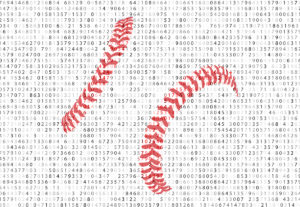Consuming Real-Time Data

A favorite movie of mine is Moneyball. The movie’s premise was based on the true story of how a general manager, an economist and the cash strapped Oakland A’s major league baseball team used statistics and analytics to propel their team into the playoffs. Other MLB teams had used athletic ability or physical potential to determine which players were drafted, acquired or played. This dynamic duo focused on the numbers. One of them was On-base Percentage (OBP), which is simply the percentage of times a player makes it on base. If you’re not on base, you can’t generate a run. This can be accomplished several ways by either a hit, a walk or a hit-by-pitch.
The A’s were extremely successful with their unique statistical approach. Unfortunately, back in 2002, these stats were not readily available for public view. Today however, the consumption of sports data has changed dramatically. The accessibility of real-time sports data is a catalyst for radio fodder or nightly discussions at the dinner table. Every major league sports franchise uses analytics in some form to achieve their ultimate goal, which has created a slew of new job opportunities. The consumption of real-time data is very much a part of our daily life. The most prolific examples are found as weather radar apps, real-time traffic information or stock investment information.
The not-so-well-known app that I use throughout the summer weeks is for the little league travel baseball team I help coach. Throw away that “old school” paper, wire bound scorebook. Our team uses an app to keep score. The majority of teams have made the same transition. This app has been revolutionary for the way teams keep score and how followers consume the play-by-play in real-time. Parents can easily subscribe to the app and follow the game in real-time. However, its purpose is far more functional and useful to the coaching staff.
The data collected is formalized into various analytics. We utilize the analytics as a teaching tool to help make necessary adjustments to our team. We can see if a player is hitting to the opposite field too many times. We can adjust their batting mechanics. We can look at pitch count and determine if one of our pitchers should be benched to prevent arm injury. OBP, as discussed earlier, is even important at our low level of competition. We use this specific analytic to adjust our batting line-up strategy.
You can see the many positive aspects of real-time data, but there is also a negative side. Consuming real-time data while driving is an obvious example. Relating back to little league: players who are privy to the real-time data during the game can be distracted by poor stats which can affect their confidence and performance. The sharing of this data to the fans opens the door for the scorekeeper to be scrutinized and judged if a play is not properly entered. In this situation, parents tend to lose objectivity when it comes to looking out for the best interest of their kids.
For all forms of real-time data consumption, it is a monumental task to gather and process the information. Despite the explosion of these apps over the past ten years, the creation of new apps and more data consumption moving forward will undoubtedly shadow today’s consumer use.
